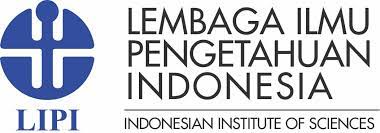ALMARFŪ‘ᾹT DALAM SURAT YĀSĪN DAN MODEL PEMBELAJARAN QAWᾹ‘ID-NYA UNTUK PEMULA
DOI:
https://doi.org/10.53866/aljabiri.v2i2.545Keywords:
Almarfūʻāt, Surat Yāsīn, Learning ModelAbstract
This research aims to 1) find out the variety of almarfūʻāt in Surah Yasin, 2) find out the qawāʻid almarfūʻāt learning model for beginners, and 3) understand the concept of almarfūʻāt learning for beginners. This research uses qualitative research in the form of literature. Using primary data sources, namely the Al-Quran Al-Karim, the book Matn Jurumiyah by Ahmad Zaini Dahlan, and the book Iʻrobul Koran bil Qiraati Asyrah Almutawatir. And secondary data in the form of books that are relevant to the research focus.
So the data collection technique uses documentary study techniques and online data search techniques. Then, analyze the data using content analysis and discourse analysis. The results of the research show that there are 234 isim-isim that are read by rofaʻ in Surah Yāsīn with details of 96 fāʻil consisting of 8 isim ẓāhir and 88 isim ḍamir (35 ḍamir mustatir and 53 ḍamir bariz), 9 nāibul fāʻil consisting of 2 isim ẓāhir and 7 isim ḍamir, 38 mubtadaʻ consisting of 18 mubtadaʻ isim ẓāhir (10 mubtadaʻ isim ẓāhir muqoddam, and 8 muakhar) and 21 mubtadaʻ isim ḍamir , 47 khabar consisting of 16 khabar mufrod and 31 khabar ghoiru mufrod, 11 isim kana, 19 khabar inna. And 14 tābiʻ consisting of 11 naʻat, 2 aṭaf, and 1 badal.
The learning model uses RPP (learning implementation plan) with fa'il and mubtada' khabar material as an example. The concept of al-marfūʻāt learning takes the theme of أَلْأَدَاوَتُ الْمَدْرَسيَّةِ (school equipment), several examples of al-marfūʻāt in Surah Yāsīn to be used as examples, learning materials, practices and exercises for students. To understand the contents that rofaʻ reads in learning Arabic. Learning Arabic material on al-marfūʻāt MTs class VII uses a structural approach. The learning method uses inductive and deductive methods. The techniques used are in accordance with the 4 Arabic language skills, namely listening, speaking, reading and writing. The learning media used consists of the teacher's voice, whiteboard, reading text and pictures. Learning evaluation consists of non-test techniques in the form of observation, as well as test techniques in the form of formative tests.
References
Afifah, N. L., Sunarko, A., & El Qorny, A. (2022). Implementasi Permainan Edukatif Berburu Gramatika Untuk Meningkatkan Pemahaman Nahwu Siswa Kelas Viii Mts Nurul Khosyi’in Gabus Pati. AL-KALAM| Isu-Isu Pembelajaran Bahasa Arab Di Sekolah, Madrasah dan Pesantren, 3(1).Aman, M. (2021). Bahasa Arab Dan Bahasa Al-Quran. Jurnal Tadarus Tarbawy, 4.
Azizah, L. N., Nahda, A. W., Azzah, A. N., Kholiq, D. M., & Huda, K. (2023). Nahwu Learning Development Innovation in Formal Diniah Education PP Al-Mubarok Manggisan Wonosobo. AJIRSS: Asian Journal of Innovative Research in Social Science, 2(3), 241-260.
Andriyatna. (2015, Februari 27). Bahasa. Dipetik Juli 14, 2023, dari Widuri Raharja: http;//widuri.raharja.info.com
Dahlan, A. Z. (t.thn.). Matanul Jurumiyah. Surabaya: Maktabah Al-hidayah.
Fatonah, I. A., Azizah, F., Salsabila, M., Rohyani, I., Sunarko, A., Adz-Dzakiyah, N., & Rohman, F. (2024). Pembelajaran Nahwu Berbasis Kurikulum Merdeka Di Madrasah Aliyah Negeri. SPESIFIK: Jurnal Pendidikan dan Pembelajaran, 2(2), 83-94.
Hanafi, D., Thoyyibah, I. Z., Muna, R. R., Nabila, A., & & Sunarko, A. (2023). The Nashob-Ed Isim In Surah Muhammad And Learning Techniques For Beginners. AJIRSS. Asian Journal of Innovative Research in Social Science, 60-77.
Hani, W., Azizah, N., Alwani, V. I. A., & Najwa, I. (2023). Jumlah Fi’liyah Learning Planning in the Quran Surah Luqman for Beginners. AJIRSS: Asian Journal of Innovative Research in Social Science, 2(3), 210-225.
Hasaniyah, N. (2023). Transformasi Pembelajaran Bahasa Arab . Padang: Dita Lentera.
Hamimi, A. I., Nurcholisho, L. R., Fatkhurrohman, F., Ngazizah, N., & Sunarko, A. (2022). Kata Fasad dalam Al Quran (Analisis Semantik Al Quran). Lisanan Arabiya: Jurnal Pendidikan Bahasa Arab, 6(2), 181-198.
Khasanah, N. F., Rosid, A., Ulya, M. S., Farkhah, T., & Sunarko, A. (2023). Mubtada Khobar In Surah Saba'and Learning Media For Beginners. AJIRSS: Asian Journal of Innovative Research in Social Science, 2(3), 261-273.
Margono. (2020). Metodologi Penelitian Pendidikan . jakarta : Rineka Cipta .
Maulana, A., Sunarko, A., Anis, M. Y., Hakiki, D. R. M., & Rois, A. (2023). Tahlilul Akhto'al-Imla'iyyah wal Khotiyyah fil Kitabah al-Arobiyyah li Tholabah Roudhotut Ta'lim Al-Qur'an Nurul Huda Bi Kedungkandang Malang. AJIRSS: Asian Journal of Innovative Research in Social Science, 2(3), 226-240.
Noor, S. (2009). Misteri Surat Yasin. Depok: Akmawardi Prima.
Pratama, B. I., & Ilahi, A. K. (2021). Analisis Wacana . Malang: UNISMA press.
Riga. (t.thn.). Bahasa Arab Sistematis 2 Kaidah Nahwu Metode Basis Terdapat Soal-Soal Latihan Essay Dan kunji Jawaban . Basus Unanah .
Safitri, S. N. A., Hapsari, A. F. P., Fadil, M. Z., Azura, W. A., & Faida, F. (2023). Analysis Of Maf'ul Bih And Maf'ul Mutlaq In Surah Al-Kahfi And The Learning Model. AJIRSS: Asian Journal of Innovative Research in Social Science, 2(3), 188-209.
Shorof, N. (2021, Juli 13). Nahwu Shorof: Pengertian, Materi Dasar, Tujuan, Dan Manfaatnya. Dipetik Juli 17, 2023, Dari Nahwu Shorof.Id: Http://Nahwushorof.Id
Suyanto, E., & Andriesgo, J. (2024). Pengembangan Kurikulum Bahasa Arab. Riau: DOTPLUS Publisher.
Tim Penyusun. (2021). Panduan Penulisan Skripsi FUTK UNSIQ . Wonosobo: Unsiq Press.
Warindah, E. (2017). Kamus Bahasa Indoneia . Jakarta: Media Imprint Kawan Pustaka.
Yasin, M. H. (t.thn.). Kitab Tashilul Mubtadi Fii Ilmi Nahwu. Semarang: Karya Thaha Putra.
Yayasan Pustaka Opor Indonesia . (2014). Metode Penelitian Kepustakaann/Mestika Zed. jakarta : YPOI.
Yendra. (2012). Mengenal Ilmu Bahasa (Linguistik). Yogyakarta: Budi Utama.
Downloads
Published
Issue
Section
License
Copyright (c) 2023 Ziha Fikri Mufhimah, Asep Sunarko, Moh. Ali Qorror Al-Khasy, Azzahra Rabi Farandika, Dalla Sahal Fahmi , Pablo Sindo

This work is licensed under a Creative Commons Attribution-ShareAlike 4.0 International License.

















